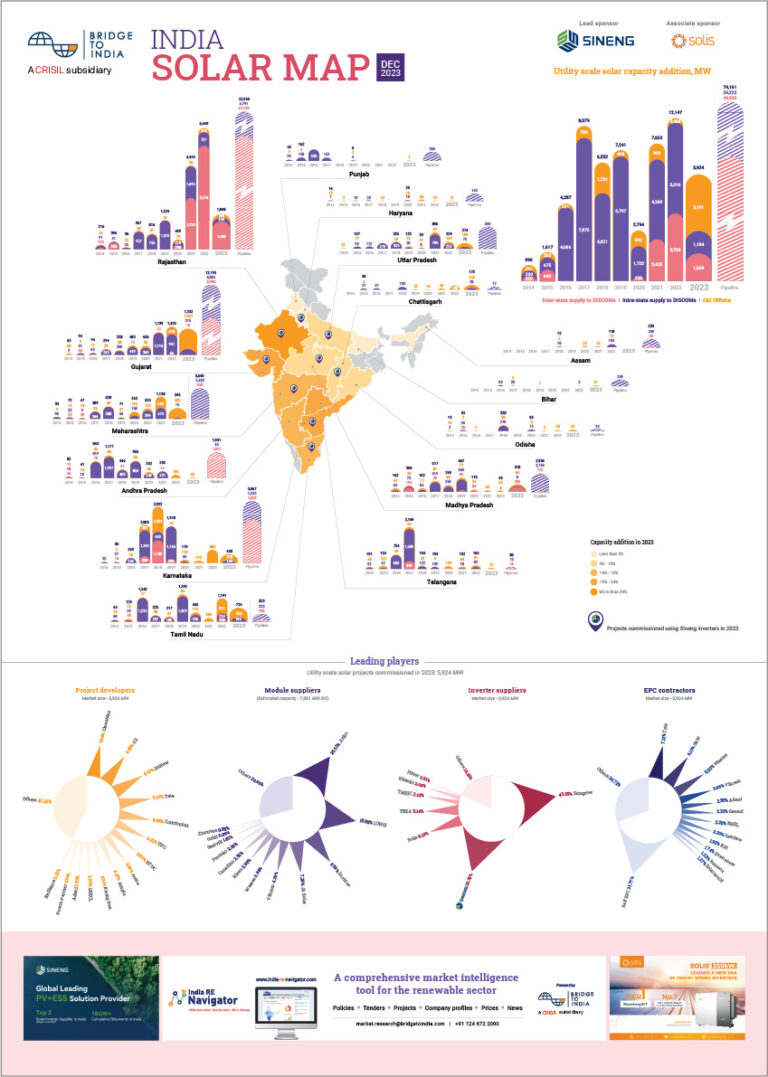After failure of its flagship 10 GW integrated manufacturing tender, SECI has issued another integrated tender combining project development (3 GW) and module manufacturing (1.5 GW). There are some notable changes over the previous tender. Minimum bid size has been reduced to 1 GW project development and 0.5 GW module manufacturing, down from 2 GW and 0.6 GW respectively. Backward integration is now limited to cell manufacturing as against wafer manufacturing. Cross-penalty structure between the two businesses is much simpler now. And ceiling tariff has been reduced marginally to INR 2.75/ kWh from INR 2.85/ kWh earlier.
- Reduction in tender size is helpful from a risk management perspective but the proposed manufacturing business would be significantly sub-optimal in size;
- The ceiling tariff of INR 2.75/ kWh is border line attractive at best;
- We put the odds of this tender going through successfully at 50:50;
Smaller scale of project development, limited backward integration and simplification of penalty structure are helpful changes. They reduce capital exposure and should attract more players into fray. But the core underlying problem remains – the combination of two disparate parts of the value chain – manufacturing and project development – does not stack up as the two businesses have very different core competencies and risk-return expectations. Few companies want to be present in both manufacturing and project development.
Moreover, the new manufacturing business would be sub-optimal in size. In a cut-throat business, scale is seen as a major competitive advantage. Share of top ten module manufacturers globally has gone up to 60% from just 42% in 2015. Incredibly, average global shipment of top ten players has gone up to 6.3 GW per annum from less than 2.5 GW just three years ago.
Figure: Top ten global module suppliers in 2018

Source: PV-Tech, BRIDGE TO INDIA research
The proposed minimum manufacturing capacity of 0.5 GW is miniscule in comparison. And it will be seen as a loss leader by potential bidders. Unfortunately, the ceiling tariff of INR 2.75/ kWh for project development is not enough to compensate for this downside.
With safeguard duty having failed to shore up domestic manufacturing, the government is under pressure. It is doubling down on the curious integrated tender concept. We are not sure if the new tender will enthuse the market sufficiently. Some of the Chinese manufacturers, keen to diversify their manufacturing bases in view of trade war with the US, are bound to show interest. We put the odds of this tender going through successfully at 50:50.












